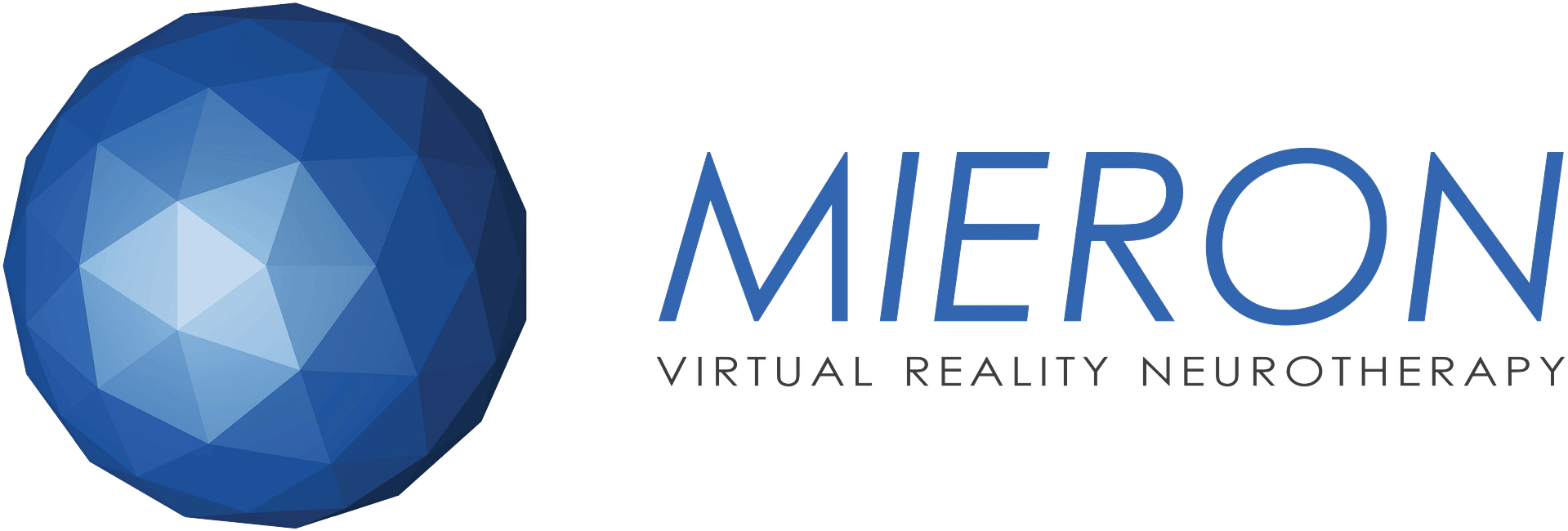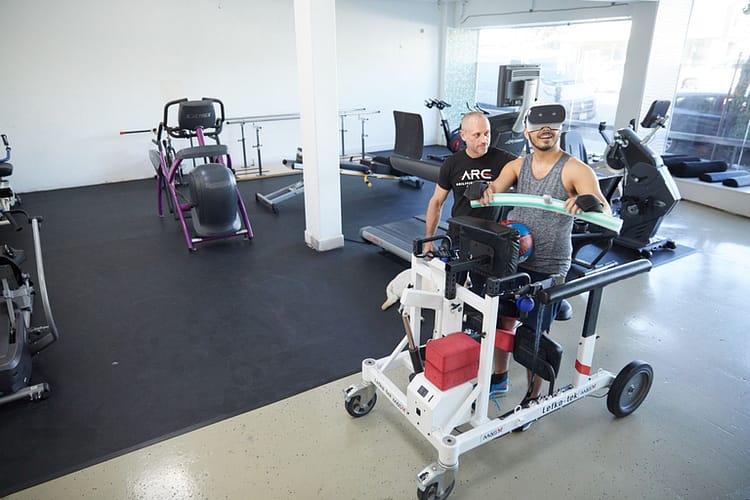Half of all American’s will require at least 3 months of physical therapy at some point in their lives. The list of issues that require physical therapy is extensive. Whether you got hurt playing a sport, in a vehicular accident, or need help after a long convalescence, you want a therapeutic plan that maximizes the outcomes, improves things as quickly as possible, and does so with a minimum of pain and stress. Healthcare industry looks to innovative solutions more than ever before, and virtual reality has become a promising option for this field. Virtual Reality provides a new opportunity for physical therapy patients to get the help they need in a convenient, comfortable, and comprehensive way that supports them every step of the way toward recovery. Specialized VR experiences typicaly denoted as “Virtual Reality NeuroTherapy” or VRNT, indicate therapeutic immersive experiences created for these applications. Whether you are doing Physical Therapy with a provider or at home, VR & VRNT provide advanced solutions to help the trainee achieve more of their therapy goals.
What kinds of injuries are treated with physical therapy?
The list of possible injuries that may benefit from physical therapy includes almost anything that affects the normal function of any body part or system. It could be as simple as a badly sprained ankle to something as serious as a complete spinal cord injury. The conditions may be acute or chronic, but they all could benefit from rehabilitation with the help of a healthcare professional’s guidance.
Something as simple as poor posture, a horrible mattress, or repetitive motions at work can cause the type of injury that benefits from physical therapy. In fact, work injuries and physical stress are some of the most common kinds of injuries that people receive this type of help for. Unfortunately, these types of issues tend to creep up on people and get worse over time, so they may dismiss them as simple aches or pains or the results of aging. In general, people may be more likely to seek out medical help for the types of sudden and drastic injuries listed in the categories below.
Sports Injuries
Both amateur and competitive sports players can experience injuries that require physical therapy. In these instances, the main focus is to return the person to regular activity as quickly as possible while preventing additional problems. Some of these injuries include Achilles tendon tears, sprains and strains, groin pulls, tennis elbow, runners knee, plantar fasciitis, various hernias, and similar soft tissue injuries. The extensive list of possibilities includes sudden issues that need immediate medical attention and stress-related injuries caused by repetitive motions like swinging a tennis racket or pitching a baseball.
Injuries from Accidents
The injuries sustained in sudden accidents like car crashes, slips and falls, and similar dramatic incidences can include many of the issues listed above. However, injuries like back pain, whiplash, spinal cord injuries, and those associated with broken bones and dislocated joints are more common. The initial treatment for these types of problems usually involves emergency medical care, the potential for surgery, and short-term situations like splinting a broken bone, wearing a neck brace, or staying in the hospital in traction to keep spine, limbs, or joints aligned.
Conditions Helped With Physical Therapy
While this list does not include injuries per se, there are a variety of other conditions and medical circumstances that require physical therapy as part of the recovery process. These can include strokes, concussions, diabetic neuropathy and wound care, multiple sclerosis, carpal tunnel syndrome, or something as simple as chronic back pain.
What is the difference between physical and occupational therapy?
Physical therapy focuses more on large body parts and their ability to help the patient move around as they should. It deals with mobility and the ability to walk, range of motion of shoulders and hips, and things like balance and the ability to support one’s own weight. Physical therapy also attempts to reduce chronic pain from acute or ongoing conditions.
Occupational therapy focuses on a client’s ability to do everything necessary to take care of themselves. These activities of daily living (ADL) require both gross and fine motor skills that allow people to be independent, feel confident in their own abilities, and live productively as much as possible. Parts of this therapeutic process may include treatment for developmental and psychological conditions.
The two therapeutic specialties frequently overlap, and many patients need both to live their best life is either a chronic condition, disease, or disorder or after a debilitating accident of some kind.
What are the benefits of physical therapy?
Although the specific benefits of physical therapy differ from one patient to the next and depending on the issues they face, there are several common advantages to going through the process. One of the most common involves regaining or improving mobility and other functional abilities that allow a person to get around and do necessary actions associated with daily living. The therapeutic strategies created by the healthcare provider can improve outcomes after accidents or sports injuries among other things.
Physical therapy also helps with recovery from sudden health issues like strokes, chronic conditions like diabetes or neuropathic pain, and lifelong disabilities like cerebral palsy and cystic fibrosis. Again, the primary goal is to improve quality of life so the individual is as comfortable, independent, and confident as possible.
Specific benefits of physical therapy include:
- Prevent the need for surgery
- Avoid opioids and potential prescription medication addiction
- Improve balance, gait, and strength for mobility
- Reduce chronic pain or eliminate it altogether
- Maximize recovery of abilities after a stroke
- Recover from sports injuries and get back in the action
- Improve circulation for vascular diseases
- Manage issues associated with aging
- Boost independence and the ability for self-care
How can MieronVR be used in physical therapy?
The classic image of physical therapy that many people think of first is a sterile room in a hospital with bars, benches, and various handheld tools or toys for patients to use to improve strength and mobility. A healthcare worker hovers nearby, gives instructions, and encourages people to keep trying and do their very best. While this type of traditional physical therapy helps many people all the time, new and innovative options have appeared on the market that could work even better.
The MieronVR headset, adaptive accessories, and library of virtual reality programs have been specially created for a variety of healthcare options including physical therapy. This robust system offers something unique to the therapeutic process. The person using it may opt for an at-home VR experience or use it as part of an inpatient rehabilitation strategy. Many PT providers and locations across the country are now using virtual reality as part of their regular physical and occupational therapy process.
Virtual Reality Improves Physical Therapy Outcomes
Using and wearing a simple and comfortable VR headset is possible for the vast majority of people who need physical therapy for any reason. The MieronVR options are specifically designed for ease-of-use so people with some motor skill impairments can still get situated with the headset and use the included Mieron software. Some users may need help and guidance through the process but with the included co-viewing options, a caregiver can join the fun and watch alongside the user while they are in VR.
The library of virtual reality experiences includes a variety of programs that combine medically appropriate actions and Activity Based Training processes with interesting imagery and real-world scenery that engages the mind more than a plain in-hospital or rehab center room could.
The person receiving physical therapy may still do the same exact motions or exercises they would do without a virtual reality headset. However, the included sense of fun, gamification, and focus on mental wellness and mindfulness actually encourages more focused participation, pain relief, a more natural push for improvement, and a greater sense of satisfaction and accomplishment when each PT exercise is complete. A survey of Mieron users found that many exert themselves for longer periods of time with more intensity when they are using MieronVR as a form of rehab.
To learn more about Mieron for home use visit: https://mieronvr.com/product/mieron-go/






